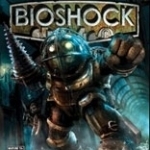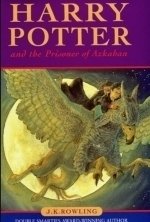Search
Search results
Matthew Krueger (10051 KP) rated the Xbox 360 version of BioShock in Video Games
Oct 21, 2019
Would You Kindly
Contains spoilers, click to show
Bioshock- is a horrorfying game, it has adventure, chills, thrills, twist, turns and so much more. It is a fantasic game to play. If you havent not played it, than i would highly reccordmend it. Lets talk about it...
The Plot: BioShock is set in 1960. The player guides the protagonist, Jack, after his airplane crashes in the ocean near the bathysphere terminus that leads to the underwater city of Rapture. Built by the business magnate Andrew Ryan, the city was intended to be an isolated utopia, but the discovery of ADAM, a genetic material which can be used to grant superhuman powers, initiated the city's turbulent decline. Jack tries to find a way to escape, fighting through hordes of ADAM-obsessed enemies, and the iconic, deadly Big Daddies, while engaging with the few sane humans that remain and eventually learning of Rapture's past.
The player, as Jack, can defeat foes in several ways by using weapons, utilizing plasmids that give unique powers, and by turning Rapture's defenses against them.
The twist is unexpected and once you find out, it is so unexpected. It's revealed that Atlas is actually the gangster Frank Fontaine, who'd smuggled Jack to the surface several years earlier with the intention of bringing him back as a weapon, as "your" DNA can operate a lot of Rapture's systems that only Ryan would otherwise have access to. Jack has been abused, hypnotized to carry fabricated memories and respond to a key phrase: "Would you kindly." Fontaine has been, to this point in the game, using it to control Jack's progression through Rapture.
Bioshock aslo has two different ends: The ending depends on how the player interacted with the Little Sisters:
1. If the player rescues all of the Little Sisters (or harvests only one of them), Jack takes them back to the surface with him and adopts five of them as his daughters, and Tenenbaum happily narrates how they go on to live full lives under his care, eventually surrounding him on his deathbed. This ending is consideredc anon in BioShock Infinite: Burial at Sea.
2. If the player harvests more than one Little Sister, Jack turns on the Little Sisters to harvest their ADAM. Tenenbaum sadly narrates what occurred, condemning Jack and his actions. A US Navy submarine then comes across the wreckage of the plane and finds itself suddenly surrounded by bathyspheres containing Splicers who attack the crew and take control of it. The submarine is revealed to be carrying nuclear missiles, with Tenenbaum claiming that Jack has now "stolen the terrible secrets of the world": the more Little Sisters are harvested, the harsher and more furious Tenenbaum's narrative becomes.
Dont forget about the big daddy.
I love this game, it is a classic. I wouls highly reccordmend playing this game.
The Plot: BioShock is set in 1960. The player guides the protagonist, Jack, after his airplane crashes in the ocean near the bathysphere terminus that leads to the underwater city of Rapture. Built by the business magnate Andrew Ryan, the city was intended to be an isolated utopia, but the discovery of ADAM, a genetic material which can be used to grant superhuman powers, initiated the city's turbulent decline. Jack tries to find a way to escape, fighting through hordes of ADAM-obsessed enemies, and the iconic, deadly Big Daddies, while engaging with the few sane humans that remain and eventually learning of Rapture's past.
The player, as Jack, can defeat foes in several ways by using weapons, utilizing plasmids that give unique powers, and by turning Rapture's defenses against them.
The twist is unexpected and once you find out, it is so unexpected. It's revealed that Atlas is actually the gangster Frank Fontaine, who'd smuggled Jack to the surface several years earlier with the intention of bringing him back as a weapon, as "your" DNA can operate a lot of Rapture's systems that only Ryan would otherwise have access to. Jack has been abused, hypnotized to carry fabricated memories and respond to a key phrase: "Would you kindly." Fontaine has been, to this point in the game, using it to control Jack's progression through Rapture.
Bioshock aslo has two different ends: The ending depends on how the player interacted with the Little Sisters:
1. If the player rescues all of the Little Sisters (or harvests only one of them), Jack takes them back to the surface with him and adopts five of them as his daughters, and Tenenbaum happily narrates how they go on to live full lives under his care, eventually surrounding him on his deathbed. This ending is consideredc anon in BioShock Infinite: Burial at Sea.
2. If the player harvests more than one Little Sister, Jack turns on the Little Sisters to harvest their ADAM. Tenenbaum sadly narrates what occurred, condemning Jack and his actions. A US Navy submarine then comes across the wreckage of the plane and finds itself suddenly surrounded by bathyspheres containing Splicers who attack the crew and take control of it. The submarine is revealed to be carrying nuclear missiles, with Tenenbaum claiming that Jack has now "stolen the terrible secrets of the world": the more Little Sisters are harvested, the harsher and more furious Tenenbaum's narrative becomes.
Dont forget about the big daddy.
I love this game, it is a classic. I wouls highly reccordmend playing this game.
Purple Phoenix Games (2266 KP) rated No Thanks! in Tabletop Games
Jan 6, 2020
Can a game with absolutely no theme be any good? Let’s find out with today’s game: No Thanks!
Usually in my intros I like throw a little flavor that matches the theme of the game. Well, I just couldn’t think of anything so you get the shortest intro I have done to date. No Thanks! is a great card game of push your luck. Period. I’ll tell you all the rules here since this mighty game may be bypassed in stores as it looks very unassuming and bland.
You are trying to get the least amount of points in a very nontraditional way. In the deck are cards numbered 3-35. You shuffle them all up and randomly eject from the game 9 cards. Nobody will know which 9. Why does that matter? Well, you score points (which is bad) equal to the lowest number of all your runs of cards. So a run of 3-4-5-6 scores 3 points because 3 is the lowest card. However, if 5 was one of the ejected cards and you had 3-4 and 6, you total would be 9 (3 from the first run and 6 from the next run since there wasn’t a 5 to connect them).
How do you get these cards? Well, on your turn you flip over a card from the face-down stack. Decide if you want to take that card into your tableau or if you would like to pass. If passing, you plop a red chip on it (of the 11 you were given at setup) and offer it to the next player. They can take the card along with the chip, or add a chip of their own. The offer now goes to the next player who does the same. Whomever ends up with the card also collects all the chips to be used on future cards.
This doesn’t really sound all that fun does it? Well it most certainly IS fun once you give it a go! Especially when you’re trying to decide if you should just take the 15 because you already have a run of 12-13-14 and it would be worth zero points, but you are also running low on chips. Let it ride around the table a couple times and get those chips! But beware of your opponents who will take the card out of spite and now you can’t connect your runs and you are low on chips. Uh oh Daddy-O!
This game is great with all player counts, and with all ages who can understand the math behind their choices. That’s why we at Purple Phoenix Games authorize a non-themed score of 8 / 12.
Usually in my intros I like throw a little flavor that matches the theme of the game. Well, I just couldn’t think of anything so you get the shortest intro I have done to date. No Thanks! is a great card game of push your luck. Period. I’ll tell you all the rules here since this mighty game may be bypassed in stores as it looks very unassuming and bland.
You are trying to get the least amount of points in a very nontraditional way. In the deck are cards numbered 3-35. You shuffle them all up and randomly eject from the game 9 cards. Nobody will know which 9. Why does that matter? Well, you score points (which is bad) equal to the lowest number of all your runs of cards. So a run of 3-4-5-6 scores 3 points because 3 is the lowest card. However, if 5 was one of the ejected cards and you had 3-4 and 6, you total would be 9 (3 from the first run and 6 from the next run since there wasn’t a 5 to connect them).
How do you get these cards? Well, on your turn you flip over a card from the face-down stack. Decide if you want to take that card into your tableau or if you would like to pass. If passing, you plop a red chip on it (of the 11 you were given at setup) and offer it to the next player. They can take the card along with the chip, or add a chip of their own. The offer now goes to the next player who does the same. Whomever ends up with the card also collects all the chips to be used on future cards.
This doesn’t really sound all that fun does it? Well it most certainly IS fun once you give it a go! Especially when you’re trying to decide if you should just take the 15 because you already have a run of 12-13-14 and it would be worth zero points, but you are also running low on chips. Let it ride around the table a couple times and get those chips! But beware of your opponents who will take the card out of spite and now you can’t connect your runs and you are low on chips. Uh oh Daddy-O!
This game is great with all player counts, and with all ages who can understand the math behind their choices. That’s why we at Purple Phoenix Games authorize a non-themed score of 8 / 12.

Miss Hollywood: Lights, Camera, Fashion! - Pet Fun
Entertainment and Games
App
Play mini games with Miss Hollywood and her pet friends and become a superstar! Budge Studios™...
Emma @ The Movies (1786 KP) rated Klaus (2019) in Movies
Dec 15, 2019
New Christmas films always make me a little sceptical, a lot don't seem to take things very seriously and that means something naff that isn't always good. Seeing the trailer for Klaus made me hopeful though, I love an origin story.
Jesper has had a privileged life up until this point, when daddy is in charge of the business you can skate by with the minimum of effort. Things are about to change though, his father has had enough of his loafing around.
One year. 6,000 letters. This is what Jesper must achieve or he'll be cast out of the life of comfort he knows. That sounds doable, right? It does until you find out he's being sent to the farthest reaches where many postmen have gone before and soon fled. The town aren't the communicative type unless it involves and insult and a projectile weapon. Jesper is set on giving up until he spots a house out on the very edge of the map, this home belongs to a reclusive woodsman named Klaus.
At first glance the animation on Klaus looked too simplistic, in a world where computer animation and effects exist you sometimes forget that something doesn't have to be overcomplicated to be good. By the end I was amazed at how much this "simple" looking film managed to get across. The contrast between the bright happy world and the dark glum one in Smeerensburg is wonderful to behold, the colours (or lack thereof) get across the despair, and mixed with the characters it shows you exactly what sort of situation Jesper is dealing with.
What I particularly like about the amination is how well each scene is crafted outside of the characters. It's so atmospheric, the fog over the town, the mist in the forest, the way the light works with the weather, it's magical.
Smeerensburg's townsfolk match their surroundings perfectly and I'd really like to congratulate the person who came up with that crazed little stabby girl, she might be my favourite character of all. Seeing how the changes unfold throughout the film was lovely, each one brought with it a thrill that warmed this cold heart on a winter's day.
"A true act of goodwill always sparks another."
The story itself is a staple of Christmas films, love and friendship conquering selfishness, but it's a very charming way to look at it. I liked that the obligatory love interest storyline was actually not the main point, the friendship made for a much better focus. Klaus weaves a wonderful tale of how simple deeds can change the world... yes, I'm being overly dramatic!
I wasn't prepared for how much this was going to get to me, I've watched it twice this weekend and I'll be watching it again before Christmas is here. Thank you, Netflix. I'm adding this to my regular Christmas watching rotation.
Originally posted on: http://emmaatthemovies.blogspot.com/2019/12/klaus-movie-review.html
Jesper has had a privileged life up until this point, when daddy is in charge of the business you can skate by with the minimum of effort. Things are about to change though, his father has had enough of his loafing around.
One year. 6,000 letters. This is what Jesper must achieve or he'll be cast out of the life of comfort he knows. That sounds doable, right? It does until you find out he's being sent to the farthest reaches where many postmen have gone before and soon fled. The town aren't the communicative type unless it involves and insult and a projectile weapon. Jesper is set on giving up until he spots a house out on the very edge of the map, this home belongs to a reclusive woodsman named Klaus.
At first glance the animation on Klaus looked too simplistic, in a world where computer animation and effects exist you sometimes forget that something doesn't have to be overcomplicated to be good. By the end I was amazed at how much this "simple" looking film managed to get across. The contrast between the bright happy world and the dark glum one in Smeerensburg is wonderful to behold, the colours (or lack thereof) get across the despair, and mixed with the characters it shows you exactly what sort of situation Jesper is dealing with.
What I particularly like about the amination is how well each scene is crafted outside of the characters. It's so atmospheric, the fog over the town, the mist in the forest, the way the light works with the weather, it's magical.
Smeerensburg's townsfolk match their surroundings perfectly and I'd really like to congratulate the person who came up with that crazed little stabby girl, she might be my favourite character of all. Seeing how the changes unfold throughout the film was lovely, each one brought with it a thrill that warmed this cold heart on a winter's day.
"A true act of goodwill always sparks another."
The story itself is a staple of Christmas films, love and friendship conquering selfishness, but it's a very charming way to look at it. I liked that the obligatory love interest storyline was actually not the main point, the friendship made for a much better focus. Klaus weaves a wonderful tale of how simple deeds can change the world... yes, I'm being overly dramatic!
I wasn't prepared for how much this was going to get to me, I've watched it twice this weekend and I'll be watching it again before Christmas is here. Thank you, Netflix. I'm adding this to my regular Christmas watching rotation.
Originally posted on: http://emmaatthemovies.blogspot.com/2019/12/klaus-movie-review.html
Gareth von Kallenbach (980 KP) rated This is 40 (2012) in Movies
Aug 7, 2019
The last time we saw Pete and Debbie in the movie “Knocked Up”, they were just reconciling after a short separation. Pete found Debbie too controlling and regularly escaped the house leading Debbie to believe he was having an affair when really he was in a fantasy baseball draft. Five years later, Pete is no longer a band promoter but trying to keep his own record label afloat, while Debbie owns and manages a clothing boutique.
To the casual observer, Pete and Debbie, played with great chemistry by Paul Rudd and Leslie Mann, live an idyllic life with a nice house, two daughters and promising businesses. But a closer look finds Pete would rather play Scrabble on his iPad while on the toilet than spend time playing with his daughters. Most would never guess Debbie is a stress smoker since she goes to great lengths to hide her habit. Stressing over turning 40 isn’t helping her quit and neither is trying to figure out which of her employees is stealing from her. Is it the sexpot Desi, played easily by Megan Fox, or is it the strange Jodi, played with eerie weirdness by Charlyne Yi? As for Pete’s business, his stubborn antipathy towards popular music is driving his record label towards bankruptcy. But that’s not all that’s troubling Pete and Debbie. Both have daddy issues and neither know how quite to handle their over-emotional 14 year old daughter.
Sound like a hodge-podge of dilemmas? It certainly is. What started out as an amusing tale of turning 40 quickly devolved into a manic mess of pointing fingers, curse words, teenage angst and mental breakdowns. At one point in the film, Debbie’s dad, played by John Lithgow, looked utterly confused and I could empathize. If this movie had a storyline, it got lost along with any sympathy for Pete or Pete’s dad played by Albert Brooks. You know it’s bad when you start hoping the 8 year old daughter, Charlotte, says something funny again to break the tension.
With this strong cast of actors, including director Judd Apatow’s daughters Maude and Iris who played Pete and Debbie’s daughters, Sadie and Charlotte, there was no issue with the performances. Maybe some of the story was trimmed away in the editing room, but with a run time of 134 minutes, one would think some semblance of a storyline could have been left. Sure, there was plenty to laugh at, especially with bit parts played by Jason Segal, Melissa McCarthy and Chris O’Dowd.
I really wanted to like this movie. Judd Apatow, Paul Rudd and Leslie Mann sounded like the perfect trio to make a funny movie. Alas, the funny stuff is in the trailers. Save yourself some dough and wait for the DVD, where some of the storyline may make it in the deleted scenes.
To the casual observer, Pete and Debbie, played with great chemistry by Paul Rudd and Leslie Mann, live an idyllic life with a nice house, two daughters and promising businesses. But a closer look finds Pete would rather play Scrabble on his iPad while on the toilet than spend time playing with his daughters. Most would never guess Debbie is a stress smoker since she goes to great lengths to hide her habit. Stressing over turning 40 isn’t helping her quit and neither is trying to figure out which of her employees is stealing from her. Is it the sexpot Desi, played easily by Megan Fox, or is it the strange Jodi, played with eerie weirdness by Charlyne Yi? As for Pete’s business, his stubborn antipathy towards popular music is driving his record label towards bankruptcy. But that’s not all that’s troubling Pete and Debbie. Both have daddy issues and neither know how quite to handle their over-emotional 14 year old daughter.
Sound like a hodge-podge of dilemmas? It certainly is. What started out as an amusing tale of turning 40 quickly devolved into a manic mess of pointing fingers, curse words, teenage angst and mental breakdowns. At one point in the film, Debbie’s dad, played by John Lithgow, looked utterly confused and I could empathize. If this movie had a storyline, it got lost along with any sympathy for Pete or Pete’s dad played by Albert Brooks. You know it’s bad when you start hoping the 8 year old daughter, Charlotte, says something funny again to break the tension.
With this strong cast of actors, including director Judd Apatow’s daughters Maude and Iris who played Pete and Debbie’s daughters, Sadie and Charlotte, there was no issue with the performances. Maybe some of the story was trimmed away in the editing room, but with a run time of 134 minutes, one would think some semblance of a storyline could have been left. Sure, there was plenty to laugh at, especially with bit parts played by Jason Segal, Melissa McCarthy and Chris O’Dowd.
I really wanted to like this movie. Judd Apatow, Paul Rudd and Leslie Mann sounded like the perfect trio to make a funny movie. Alas, the funny stuff is in the trailers. Save yourself some dough and wait for the DVD, where some of the storyline may make it in the deleted scenes.

Face Switch - Swap & Mix
Photo & Video and Entertainment
App
Swap, blend, morph any two faces instantly ! #1 Face Switching App - see what you and your...
Kristy H (1252 KP) rated Baby Teeth in Books
Mar 11, 2019
Hanna is seven. She's a cute little thing in the eyes of her father, Alex, who thinks she can do no wrong. Hanna wants nothing more than life to be Hanna-and-Daddy forever. Her mother, Suzette, is exhausted by life with Hanna, which is nothing but endless manipulations, anger, tantrums, and now, escalating violence. Hanna doesn't speak, but she has her special ways of hurting her mother. She's been kicked out of several schools for her behavior, and Suzette is done. Even worse, Alex can't seem to acknowledge that something is off with Hanna's behavior.
"Every win for Hanna was a you-lose for Mommy."
I'd been putting off reading this book for a bit because I'd heard that it was creepy and disturbing, and I can confirm that yes, it is both of those things. Ha. I can't say I'm particularly glad that I read it, though it's an interesting read and certainly different. It mostly held my interest, but after all the hype, I found myself a little letdown: there really wasn't all that much to the story. I found myself waiting that twist, that something special that never came.
Still, Stage does an excellent job of capturing Hanna's child-like voice and telling a story from her unique perspective. The tale alternates between chapters from Hanna's perspective and then Suzette's, and I can't deny that you'll find yourself a little freaked out after reading Hanna's. The book is eerie and disturbing; it's hard to believe, yet not, as it's certainly effectively told. There are some tough moments to read and it's definitely not always for the faint of heart.
I had a tough time empathizing with our adult characters--our cast is mainly limited to the family unit, and I didn't care much for either Alex or Suzette. We are probably supposed to feel bad for Suzette, as she's struggling with both Hanna and failing health (having had Crohn's disease since childhood). And I did, at times, but she talked so much, and kept rehashing things, and I just wanted to shake her to wake up, get a grip, and deal with everything. So yeah. And her husband was just clueless and ugh.
Hanna was a much tougher one--as a parent, I found this one hard. Of course, you want to believe and care for a small child. Yet, you can also empathize with a mom who feels like they need a break from their child. I enjoyed how the book made you think about these kind of things as Hanna started to escalate. What would you do in this situation? How did things get to this point? That's where it is interesting. Some of the best parts are the oozing tension and unease that pervade the whole novel.
Unfortunately, it doesn't completely capitalize on that uneasiness, leaving you a little deflated by the end. I was actually hoping for a little more creepiness, a little less character-study. I definitely enjoyed pieces of this one, and I'd still recommend it due to how different it is.
I received a copy of this novel from the publisher and Netgalley in return for an unbiased review (thank you!).
"Every win for Hanna was a you-lose for Mommy."
I'd been putting off reading this book for a bit because I'd heard that it was creepy and disturbing, and I can confirm that yes, it is both of those things. Ha. I can't say I'm particularly glad that I read it, though it's an interesting read and certainly different. It mostly held my interest, but after all the hype, I found myself a little letdown: there really wasn't all that much to the story. I found myself waiting that twist, that something special that never came.
Still, Stage does an excellent job of capturing Hanna's child-like voice and telling a story from her unique perspective. The tale alternates between chapters from Hanna's perspective and then Suzette's, and I can't deny that you'll find yourself a little freaked out after reading Hanna's. The book is eerie and disturbing; it's hard to believe, yet not, as it's certainly effectively told. There are some tough moments to read and it's definitely not always for the faint of heart.
I had a tough time empathizing with our adult characters--our cast is mainly limited to the family unit, and I didn't care much for either Alex or Suzette. We are probably supposed to feel bad for Suzette, as she's struggling with both Hanna and failing health (having had Crohn's disease since childhood). And I did, at times, but she talked so much, and kept rehashing things, and I just wanted to shake her to wake up, get a grip, and deal with everything. So yeah. And her husband was just clueless and ugh.
Hanna was a much tougher one--as a parent, I found this one hard. Of course, you want to believe and care for a small child. Yet, you can also empathize with a mom who feels like they need a break from their child. I enjoyed how the book made you think about these kind of things as Hanna started to escalate. What would you do in this situation? How did things get to this point? That's where it is interesting. Some of the best parts are the oozing tension and unease that pervade the whole novel.
Unfortunately, it doesn't completely capitalize on that uneasiness, leaving you a little deflated by the end. I was actually hoping for a little more creepiness, a little less character-study. I definitely enjoyed pieces of this one, and I'd still recommend it due to how different it is.
I received a copy of this novel from the publisher and Netgalley in return for an unbiased review (thank you!).
Hazel (1853 KP) rated The Wolf Road in Books
Dec 14, 2018
3.5 Stars
<i>I received this book for free through Goodreads First Reads.</i>
“Any lie can turn into the truth if you believe it long enough.” <i>The Wolf Road</i> is the debut literary thriller by British author Beth Lewis. The post-apocalyptic world is not a very safe place to be, especially for a seven year old during a fierce and dangerous storm. Lost in the woods, a young girl comes across a man who, after naming her Elka, gives her a place to stay for the next ten years of her life. During this time he teaches her how to trap animals, use hunting knives and move silently between the trees – all the vital things needed to survive in the wild. For a long time Elka views this man as a father figure, but on discovering that her beloved Daddy is a serial killer, she realizes she has been living a life of lies.
Desperate to get away from the horrifying realization, Elka runs off deep into the forest with only a hunting knife and the clothes on her back. With nowhere to go, she decides to try and find her birth parents, but although she can easily survive in the wild, she is completely unprepared for the human world. With a childlike innocence, Elka finds herself in trouble on numerous occasions, only feeling at ease once she is back in the woods living the life of wolves. However she soon realizes that she will never be safe no matter how far she travels – not until that murderer is dead himself.
Once you get used to Elka’s colourful dialect, the gripping narrative pulls us into a world with danger around every corner. Elka’s revelation at the beginning of the book seems like a small issue compared with all the trouble she finds herself in later on. The reader will sympathize with Elka as she discovers the evils of man, and admire her strength as well as the development of a conscience after meeting and making her first ever friend. But whilst Elka learns how to walk amongst humans, there is a foreboding sense of doom as evilness keeps her within its sights.
<i>The Wolf Road</i> is a great post-apocalyptic story with a strong protagonist. At times it takes on a similar theme to a western novel, with guns, gold mining, and violence; but it is essentially a thriller built up of lies that are gradually unpicked. There is no psychological element to the book, thus nothing to try and work out for yourself. You simply need to read and discover what happens. As a result this book is the kind you will either love or hate. Some people may find it disturbing or gruesome, whereas others may find it exciting and enjoy reading about the unique main character.
Personally I think <i>The Wolf Road</i> is a great, original piece of work, and it only loses stars because I found a few parts a bit too grisly. Beth Lewis writes well and it cannot have been easy to keep the dialect up for the entire novel. This is an author who definitely has promise for the future.
<i>I received this book for free through Goodreads First Reads.</i>
“Any lie can turn into the truth if you believe it long enough.” <i>The Wolf Road</i> is the debut literary thriller by British author Beth Lewis. The post-apocalyptic world is not a very safe place to be, especially for a seven year old during a fierce and dangerous storm. Lost in the woods, a young girl comes across a man who, after naming her Elka, gives her a place to stay for the next ten years of her life. During this time he teaches her how to trap animals, use hunting knives and move silently between the trees – all the vital things needed to survive in the wild. For a long time Elka views this man as a father figure, but on discovering that her beloved Daddy is a serial killer, she realizes she has been living a life of lies.
Desperate to get away from the horrifying realization, Elka runs off deep into the forest with only a hunting knife and the clothes on her back. With nowhere to go, she decides to try and find her birth parents, but although she can easily survive in the wild, she is completely unprepared for the human world. With a childlike innocence, Elka finds herself in trouble on numerous occasions, only feeling at ease once she is back in the woods living the life of wolves. However she soon realizes that she will never be safe no matter how far she travels – not until that murderer is dead himself.
Once you get used to Elka’s colourful dialect, the gripping narrative pulls us into a world with danger around every corner. Elka’s revelation at the beginning of the book seems like a small issue compared with all the trouble she finds herself in later on. The reader will sympathize with Elka as she discovers the evils of man, and admire her strength as well as the development of a conscience after meeting and making her first ever friend. But whilst Elka learns how to walk amongst humans, there is a foreboding sense of doom as evilness keeps her within its sights.
<i>The Wolf Road</i> is a great post-apocalyptic story with a strong protagonist. At times it takes on a similar theme to a western novel, with guns, gold mining, and violence; but it is essentially a thriller built up of lies that are gradually unpicked. There is no psychological element to the book, thus nothing to try and work out for yourself. You simply need to read and discover what happens. As a result this book is the kind you will either love or hate. Some people may find it disturbing or gruesome, whereas others may find it exciting and enjoy reading about the unique main character.
Personally I think <i>The Wolf Road</i> is a great, original piece of work, and it only loses stars because I found a few parts a bit too grisly. Beth Lewis writes well and it cannot have been easy to keep the dialect up for the entire novel. This is an author who definitely has promise for the future.
BankofMarquis (1832 KP) rated Shazam! (2019) in Movies
Sep 1, 2019
Entertaining Enough
In the battle of DC vs Marvel in the Cinematic world, the prevailing theory is that DC is "righting the ship" with back-to-back decent films - AQUAMAN and SHAZAM. And...after viewing both of these films, I will agree that they are moving the ship in the correct direction, but they have a long, long way to go before they can say they have "righted" this ship.
SHAZAM is a fun. light, comedic-ish film that will appeal to kids and tweens and will be considered "not bad" by older teens and adults - and that is an improvement for a DC comic book film.
Asher Angel stars as Billy Batson, a troubled teenager with family/parental issues (is there any other kind in these types of films?) who is given the power of SHAZAM by a mysterious wizard (the always dependable Djimon Hounsou), when he says the magical word SHAZAM he is instantly changed into the SuperHero SHAZAM. The Superhero part of this character is played by Zachary Levi (TV's CHUCK) and that is the first problem for me with this film, I didn't feel that these 2 actors connected much to form the illusion of 1 person. Asher is all "broody and moody" - you know, the way an adult would direct a teenage actor to perform as a troubled teen - while Levi, who is having some fun, looks like he is trying just a bit too hard to showcase his "inner teenager" while wrapped inside a body hugging, muscle enhancing costume.
Billy Batson is sent to a foster home full of a "It's A Small World" group of troubled youth that have - despite their differences - formed into a family. Want to bet that Billy figures out that "family" does not mean his mother and father who abandoned him but rather those around you that love and care for you?
All of the kids in this "family" are well played, as are the "father and mother" figures. Standouts are Faithe Herman as smart-as-a-whip/cute-as-a-button Darla and, especially, Jack Dylan Grazer (hypochondriac Eddie in IT: CHAPTER 1) as the lad who becomes Billy's best friend. He is just as fun and charismatic as he was in IT. To be honest, I think I wanted more of a movie about this group of people than the typical "Super Hero/Super Villain" film.
However, I can forgive this film for focusing on the Hero/Villain dynamic for Mark Strong (SHERLOCK) is wonderfully villainous as the bad guy with daddy issues of his own and "that guy" actor John Glover is in it all too briefly as his dad.
Director David F. Sandberg (ANNABELLE: CREATION) does a nice job of keeping the action going at a fast enough pace to keep things entertaining - albeit in a way that was rather pedestrian and "nothing new". But he aims this film squarely at the older kid/younger tween audience and they will enjoy this very much, whilst the rest of us will not be bored as we accompany them.
Letter Grade: B
7 stars (out of 10) and you can take that to the Bank(ofMarquis)
SHAZAM is a fun. light, comedic-ish film that will appeal to kids and tweens and will be considered "not bad" by older teens and adults - and that is an improvement for a DC comic book film.
Asher Angel stars as Billy Batson, a troubled teenager with family/parental issues (is there any other kind in these types of films?) who is given the power of SHAZAM by a mysterious wizard (the always dependable Djimon Hounsou), when he says the magical word SHAZAM he is instantly changed into the SuperHero SHAZAM. The Superhero part of this character is played by Zachary Levi (TV's CHUCK) and that is the first problem for me with this film, I didn't feel that these 2 actors connected much to form the illusion of 1 person. Asher is all "broody and moody" - you know, the way an adult would direct a teenage actor to perform as a troubled teen - while Levi, who is having some fun, looks like he is trying just a bit too hard to showcase his "inner teenager" while wrapped inside a body hugging, muscle enhancing costume.
Billy Batson is sent to a foster home full of a "It's A Small World" group of troubled youth that have - despite their differences - formed into a family. Want to bet that Billy figures out that "family" does not mean his mother and father who abandoned him but rather those around you that love and care for you?
All of the kids in this "family" are well played, as are the "father and mother" figures. Standouts are Faithe Herman as smart-as-a-whip/cute-as-a-button Darla and, especially, Jack Dylan Grazer (hypochondriac Eddie in IT: CHAPTER 1) as the lad who becomes Billy's best friend. He is just as fun and charismatic as he was in IT. To be honest, I think I wanted more of a movie about this group of people than the typical "Super Hero/Super Villain" film.
However, I can forgive this film for focusing on the Hero/Villain dynamic for Mark Strong (SHERLOCK) is wonderfully villainous as the bad guy with daddy issues of his own and "that guy" actor John Glover is in it all too briefly as his dad.
Director David F. Sandberg (ANNABELLE: CREATION) does a nice job of keeping the action going at a fast enough pace to keep things entertaining - albeit in a way that was rather pedestrian and "nothing new". But he aims this film squarely at the older kid/younger tween audience and they will enjoy this very much, whilst the rest of us will not be bored as we accompany them.
Letter Grade: B
7 stars (out of 10) and you can take that to the Bank(ofMarquis)
Ivana A. | Diary of Difference (1171 KP) rated Harry Potter and the Prisoner of Azkaban in Books
Aug 3, 2020
<a href="https://amzn.to/2Wi7amb">Wishlist</a>; | <a
<a href="https://diaryofdifference.com/">Blog</a>; | <a href="https://www.facebook.com/diaryofdifference/">Facebook</a>; | <a href="https://twitter.com/DiaryDifference">Twitter</a>; | <a href="https://www.instagram.com/diaryofdifference/">Instagram</a>; | <a href="https://www.pinterest.co.uk/diaryofdifference/pins/">Pinterest</a>;
#1 <a href="https://www.goodreads.com/review/show/3217515684">Harry Potter and the Philosopher's Stone</a> - ★★★★★
#2 <a href="https://www.goodreads.com/review/show/2371215543">Harry Potter and the Chamber of Secrets</a> - ★★★★★
#3 <a href="https://www.goodreads.com/review/show/3275165909">Harry Potter and the Prisoner of Azkaban</a> - ★★★★
<img src="https://diaryofdifference.com/wp-content/uploads/2020/05/Book-Review-Banner-44.png"/>;
In Harry Potter and the Prisoner of Azkaban, Harry Potter is now in his third year at Hogwarts. The atmosphere is tense. There is an escaped mass murderer on the loose, and the prison guards have been called to guard the school.
In the third book, we can immediately notice a much darker and dangerous atmosphere, compared to the previous book. During the series, the books do get gradually darker and darker, more and more mature, and I think this is the book where we start to notice this transition for the first time.
Harry Potter and his friends have grown up a little, and it clearly shows in their conversations and choices. I was happy to see all the things we learn in this book. The dementors and their deadly kiss, patronuses as well as magical creatures. We learn that Hippogriffs are proud and easily offended.
<b><i>And we also learn that Malfoy is still a little brat.</i></b>
The fact that little entitles Malfoy is so jealous of Harry that daddy puts him to play in the Quidditch team annoyed me so much. I just wanted to slap him!
<b><i>"Pity you can't attach an extra arm to yours, Malfoy," said Harry. "Then it could catch the Snitch for you."</i></b>
I got quite emotional when Harry is troubled by his parent's death and is grieving openly, probably for the first time. I believe him meeting more people that were friends with his parents helped him heal. It is such a good feeling to know Harry does have a family and things are starting to look a bit better for him.
<b><i>"You think the dead we have loved ever truly leave us? You think that we don't recall them more clearly than ever in times of great trouble?"
</i></b>
I didn't quite enjoy the time-travelling part through, I have to be honest. Even though the idea sounds nice, it always troubles me that it is never properly explained and very little attention is being given to it. I wish I read more about it, because then I would have loved it!
I enjoyed this book a lot! It is Harry Potter after all. But it isn't a favorite of mine. I loved how Harry finds out more about his past and gets a couple of more answers, but I also loved that new paths are opening and are waiting to be discovered in the next books.
<a href="https://diaryofdifference.com/">Blog</a>; | <a href="https://www.facebook.com/diaryofdifference/">Facebook</a>; | <a href="https://twitter.com/DiaryDifference">Twitter</a>; | <a href="https://www.instagram.com/diaryofdifference/">Instagram</a>; | <a href="https://www.pinterest.co.uk/diaryofdifference/pins/">Pinterest</a>;
#1 <a href="https://www.goodreads.com/review/show/3217515684">Harry Potter and the Philosopher's Stone</a> - ★★★★★
#2 <a href="https://www.goodreads.com/review/show/2371215543">Harry Potter and the Chamber of Secrets</a> - ★★★★★
#3 <a href="https://www.goodreads.com/review/show/3275165909">Harry Potter and the Prisoner of Azkaban</a> - ★★★★
<img src="https://diaryofdifference.com/wp-content/uploads/2020/05/Book-Review-Banner-44.png"/>;
In Harry Potter and the Prisoner of Azkaban, Harry Potter is now in his third year at Hogwarts. The atmosphere is tense. There is an escaped mass murderer on the loose, and the prison guards have been called to guard the school.
In the third book, we can immediately notice a much darker and dangerous atmosphere, compared to the previous book. During the series, the books do get gradually darker and darker, more and more mature, and I think this is the book where we start to notice this transition for the first time.
Harry Potter and his friends have grown up a little, and it clearly shows in their conversations and choices. I was happy to see all the things we learn in this book. The dementors and their deadly kiss, patronuses as well as magical creatures. We learn that Hippogriffs are proud and easily offended.
<b><i>And we also learn that Malfoy is still a little brat.</i></b>
The fact that little entitles Malfoy is so jealous of Harry that daddy puts him to play in the Quidditch team annoyed me so much. I just wanted to slap him!
<b><i>"Pity you can't attach an extra arm to yours, Malfoy," said Harry. "Then it could catch the Snitch for you."</i></b>
I got quite emotional when Harry is troubled by his parent's death and is grieving openly, probably for the first time. I believe him meeting more people that were friends with his parents helped him heal. It is such a good feeling to know Harry does have a family and things are starting to look a bit better for him.
<b><i>"You think the dead we have loved ever truly leave us? You think that we don't recall them more clearly than ever in times of great trouble?"
</i></b>
I didn't quite enjoy the time-travelling part through, I have to be honest. Even though the idea sounds nice, it always troubles me that it is never properly explained and very little attention is being given to it. I wish I read more about it, because then I would have loved it!
I enjoyed this book a lot! It is Harry Potter after all. But it isn't a favorite of mine. I loved how Harry finds out more about his past and gets a couple of more answers, but I also loved that new paths are opening and are waiting to be discovered in the next books.







